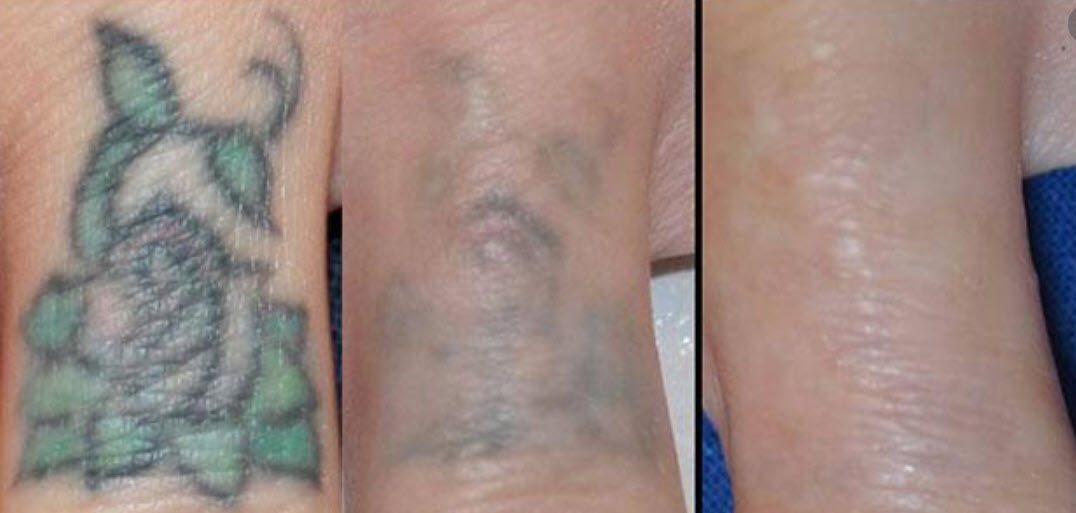Tattoo removal dates back to ancient times. People have been trying to remove them since the invention of tattoos. Many popular methods were invasive and painful. Some of these procedures are still in practice today.
It is important to choose smartly which method to choose for removing tattoos you might have gotten in your youth. There are different methods, but it may be challenging to pick one. We believe it is vital for patients to know the details, including risks, so they make an informed decision before choosing a procedure. Not all tattoo removal methods are safe and efficient. Most of them are potentially unsafe and can lead to problems in the future. It’s hard to find removal options that are both safe and effective.
The blog is not to scare you; it is so that you know the risk and pain of selecting an incorrect removal method.
Here are five methods if you are considering tattoo removal in Dubai.
Salabrasion & Dermabrasion:
The oldest method for tattoo removal still in use today is salabrasion. It entails the abrasions of the dermis and epidermis with a salt-based solution. Dermabrasion is similar to salabrasion but instead relies on mechanical instruments. The rotating mechanical instrument peels off the epidermis and dermis of the skin. Salabrasion and dermabrasion treatments cause excruciating pain.
They require many treatments over time and can leave the skin raw and open for infection. There is also a lack of efficiency and also loss of excessive amounts of skin. This leaves a scar that is much more noticeable than the tattoo ever was.
Skin Excision or Surgical Tattoo Removal:
Skin Excision, or surgical removal, is another widely used method for tattoo removal. As the name suggests, this procedure removes tattoos by cutting off the skin. The practitioner stitches the wounds and leaves them for healing. The practitioner may consider skin grafting.
People perceive it will lead to a successful removal. But the surgeons are unable to remove all of the ink deep down. This procedure leaves a mark on the skin; it varies in size depending on the tattoo. Excision is good for smaller tattoos but can be difficult or impossible when dealing with larger areas.
Subcutaneous Injections of Solutions:
Subcutaneous injections of glycolic acid-based solutions or other liquid solutions entail injecting these solutions below the epidermis so they may affect the tattoo ink.
These solutions have a variety of effects on the skin. Some are very serious and can cause permanent damage to the epidermis or dermis.
Moreover, the effectiveness of this method is not consistent. Because expelling the ink-solution mixture from the dermis to the epidermis is not easy.
Tattoo Removal Cream:
A common method for removal is by using tattoo removal creams. A removal cream may seem appealing because it is inexpensive and easy to use.
Creams are rarely capable of removing ink from the skin’s deeper layers. Even if they were to work, it would only superficially fade tattoos in the upper layer of skin (epidermis).
Creams do more harm than good when it comes to removing tattoos. Due to them containing acids or bleaching chemicals and applying without supervision, skin damage is highly probable. The best-case scenario is that nothing happens. But this tattoo removal treatment often leaves you feeling itchy and peeling, with permanent scars and many other unsightly side effects.
Laser Tattoo Removal:
Laser tattoo removal is one of the most common techniques for removing tattoos today. Laser removal uses a numbing cream to reduce the desensitize the skin before the procedure. It then uses a special laser device to aim at the targeted tattoo. The laser beam can heat tattoo pigment, breaking it into smaller ink particles and expelling it out of the body through the lymphatic system. It does not affect the surrounding skin. Laser removal may also require many sessions for permanent tattoo removal.
The procedure is non-invasive and requires minimal downtime. It is a painless, quick, and efficient way for tattoo removal.
However, there are rare chances of scarring, hyperpigmentation, and burns.
Final Thoughts:
Before opting for any removal method, consult a professional tattoo removal practitioner to avoid any damage to your skin. Laser tattoo removal is around for quite some time. Compared to other methods for tattoo removal, it is considered the most effective and safe way. With minimal side effects and a painless procedure, it is the most sought-after removal procedure.
